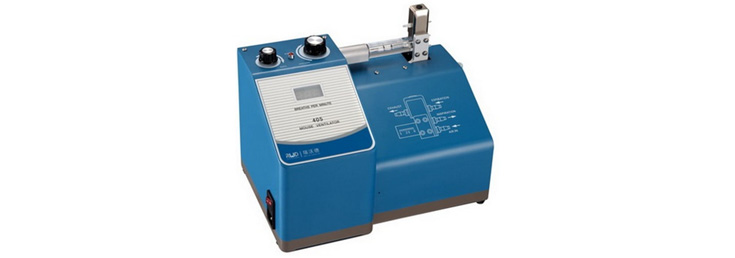R405 Mouse Ventilator
Equipped with high quality motor, speed reducer and controller, RWD’s ventilator with low noise, precisely control and durable.They could be run separately with air or oxygen as the gas source, or together with anesthesia machine for improving the anesthetic effect.
Features:
- Classic capacitive control mode, fine motor control, safe and stable
- The piston travels to the end of the cylinder completely emptying the cylinder
- minimizing the dead space of the breathing circuit.
- Respiratory rates: 18 – 150 strokes /minute
- Tidal volumes: 0.1 to 1.0 cc in 0.1 cc increments
Technical Specifications:
- To be used for mice and perinatal rats up to 200 g
- Respiratory rates: 18 – 150 strokes /minute
- Tidal volumes: 0.1 to 1.0 cc in 0.1 cc increments
- Numerical LED displays the respiratory rate
- Volume and rate setting can be adjusted while the ventilator is running
- Monitor and control PEEP (positive end expiatory pressure) by attaching the ventilator exhaust to a column of water, when long term animal ventilation is required.
- Monitor the PEEP, new tube coupling can easily apply to different sized tube
- Volume and speed controlled by the linear mode
Equipment: Comes with connection tubing for mask & induction chamber
Ordering Information:
| Cat No. | Product Description | Configuration |
| R405 | Mouse Ventilator, 220 V | ● |
| R405V | Mouse Ventilator, 110 V | ● |
● Recommended configuration
○ Optional
About RWD Anesthesia
RWD Life Science has been always dedicated to study and provide perfect and competitive inhalation anesthesia systems that have great practical value to the life science research community. Multiple complete solutions to different procedures in mice, rats, rabbits, cats, dogs, monkey, pig etc. have been set up, which has remarkable and even exclusive advantages over existing system, for example:
- Precise and stable control of anesthetic agents output regardless of environmental changes like pressure, temperature and air flow within the specific limits.
- The miniaturized design like anesthesia machines and scavenging system helps to improve laboratory space utilization.
- Unique stereotaxic frame nosecone masks and cone masks with tiny sizes satisfy more delicate surgeries like craniocerebral and ophthalmological surgery, and at the same time minimize harmful exposure to the research subjects while connecting to evacuation system.
- The latest-designed waste gas evacuation system with weighing (Cat No.R546W) brings research subjects great convenience.
- Higher performance to price ratio helps research subjects to reduce their expense while maintaining successful research.
- High adsorption efficiency of activated charcoal filter canister (Cat No.R510-31 & R510-31S).
Advantages of Inhalation Anesthesia:
- Can offer an improved level of control over depth and duration of anesthesia, especially for prolonged procedures.
- To be relatively insoluble and faster elimination in blood enables rapid recovery.
- Be of rapid onset and offset with minimal side effects.
- Have little or no toxic effects thanks to non-metabolism characteristic of Sevoflurane and Isoflurane.
- Be more safer and efficient performance to reduce morbidity rates and increase the chance for successful outcomes.





